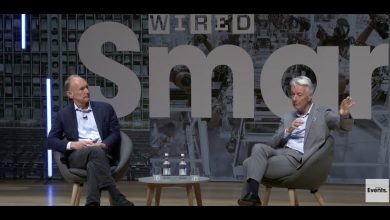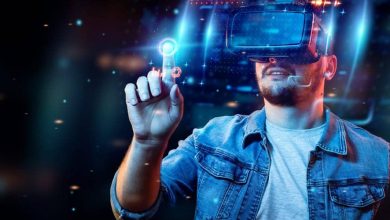The Metaverse and Web 3.0: Surpassing the Limits of the Internet for Business
The Internet is changing – transitioning from 2D to 3D and quickly becoming smarter. This challenges the status quo, shaping everything from customer interactions to digital communication strategies.
 The internet has evolved significantly since its inception, and with each new phase, it brings about transformative changes.
The internet has evolved significantly since its inception, and with each new phase, it brings about transformative changes.
Web 3.0 is the next stage in this evolution, promising a more intelligent, interconnected, and personalized online experience.
The term “Web 3.0” refers to the next generation of the internet, where the focus is on creating a more intelligent and interconnected web experience. It builds upon the foundation of Web 2.0, which introduced user-generated content, social media, and interactive web applications.
What is Web 3.0?
Web 3.0 is often described as the semantic web, where information is not only presented in a human-readable format but also understood and processed by machines. It aims to enhance the web’s capabilities by incorporating artificial intelligence, machine learning, and decentralized technologies.
The Internet is changing – transitioning from 2D to 3D and quickly becoming smarter. This challenges the status quo, shaping everything from customer interactions to digital communication strategies.
In this panel talk hosted by Glasgow City of Science and Innovation you can hear from leading experts and tech disruptors about how companies are exploring the potential of new platforms and data structures to redefine their products and services and predict future customer needs. Speakers:
- Theo Tzanidis: Senior Lecturer in Digital Communications, University of the West of Scotland.
- Nick Rosa: Industry Technology Innovation Lead Europe, Accenture.
- Esther O’Callaghan OBE: Founder hundo.xyz.
Key Features of Web 3.0
Web 3.0 introduces several key features that differentiate it from its predecessors:
- Artificial Intelligence: Web 3.0 leverages AI technologies to understand and interpret data, enabling more personalized and context-aware experiences.
- Decentralization: Web 3.0 utilizes blockchain and decentralized technologies to remove intermediaries, enhance security, and enable peer-to-peer interactions.
- Interoperability: Web 3.0 aims to create a seamless experience across different platforms, devices, and applications, allowing for easy data sharing and integration.
- Contextual Awareness: Web 3.0 understands user preferences, location, and other contextual information to deliver more relevant and personalized content.
- Enhanced User Experience: Web 3.0 focuses on improving user experiences through intuitive interfaces, natural language processing, and immersive technologies.
Applications of Web 3.0
Web 3.0 has the potential to revolutionize various industries and sectors. Some of the key applications include:
- Smart Cities: Web 3.0 can enable efficient management of urban infrastructure, including transportation, energy, and public services.
- Healthcare: Web 3.0 can facilitate personalized healthcare solutions, remote patient monitoring, and improved access to medical information.
- E-commerce: Web 3.0 can enhance online shopping experiences through personalized recommendations, secure transactions, and decentralized marketplaces.
- Education: Web 3.0 can transform education by providing personalized learning experiences, adaptive assessments, and immersive simulations.
- Finance: Web 3.0 can revolutionize the financial industry with decentralized finance (DeFi), smart contracts, and secure digital identities.
Challenges and Considerations
While Web 3.0 holds immense potential, it also presents challenges and considerations:
- Privacy and Security: With increased data collection and processing, ensuring privacy and security becomes crucial.
- Regulatory Frameworks: The evolving nature of Web 3.0 requires the development of appropriate regulatory frameworks to address legal and ethical concerns.
- Education and Adoption: Widespread adoption of Web 3.0 technologies requires educating users and organizations about their benefits and implications.
- Infrastructure and Connectivity: Web 3.0 relies on robust infrastructure and high-speed connectivity to deliver its full potential.
Conclusion
Web 3.0 represents the next phase of the internet’s evolution, promising a more intelligent, interconnected, and personalized web experience. With its focus on artificial intelligence, decentralization, and interoperability, Web 3.0 has the potential to transform various industries and sectors.
However, it also brings challenges and considerations that need to be addressed for its successful implementation. As we move forward, Web 3.0 will continue to shape the future of the internet, offering new opportunities and possibilities for individuals and businesses alike.



